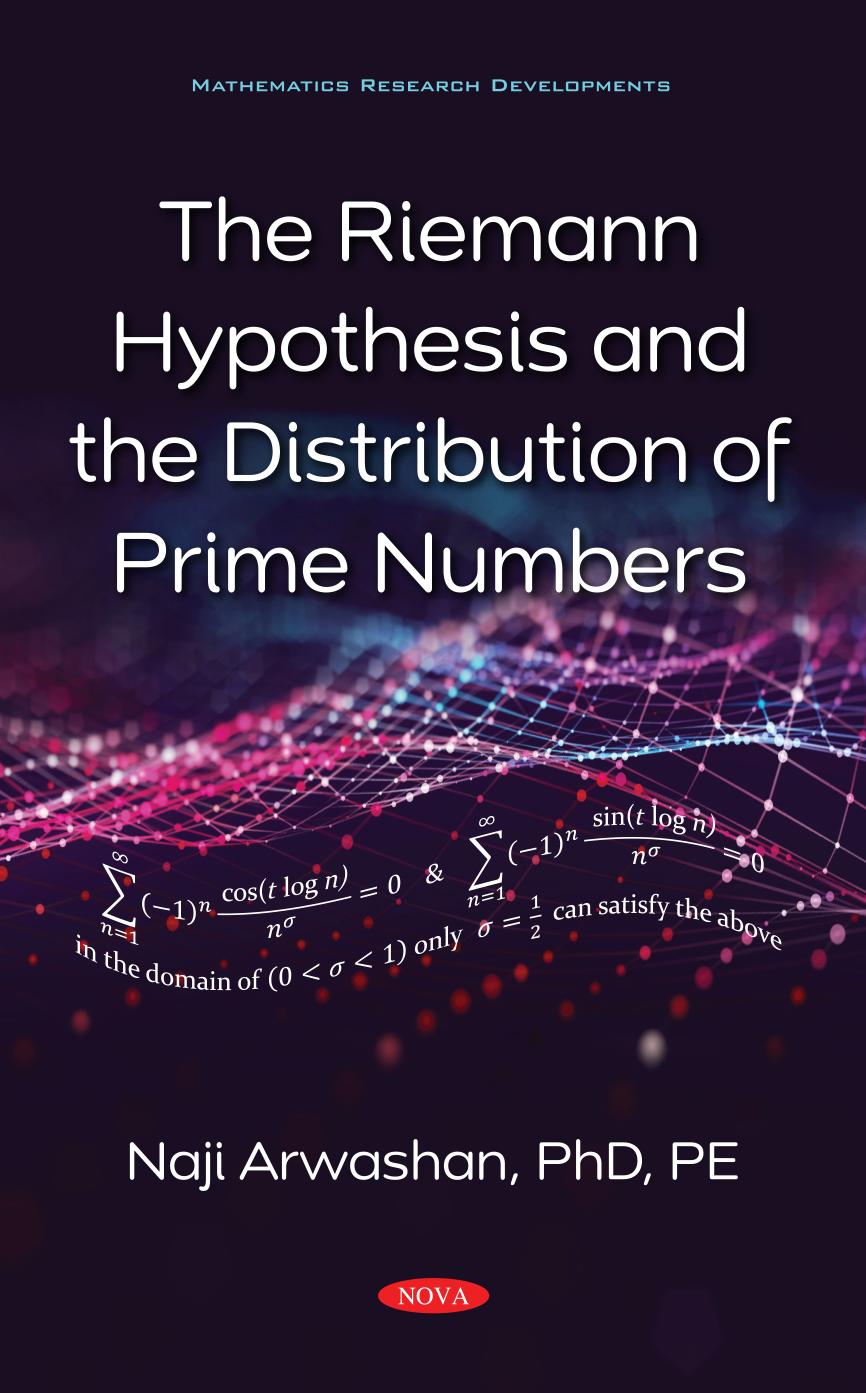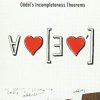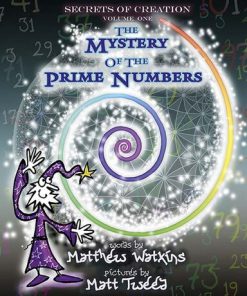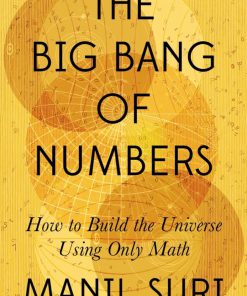The Riemann hypothesis and the distribution of prime numbers 1st Edition by Naji Arwashan 1536194220 9781536194227
$50.00 Original price was: $50.00.$25.00Current price is: $25.00.
The Riemann hypothesis and the distribution of prime numbers 1st Edition by Naji Arwashan – Ebook PDF Instant Download/Delivery: 1536194220, 9781536194227
Full download The Riemann hypothesis and the distribution of prime numbers 1st Edition after payment

Product details:
ISBN 10: 1536194220
ISBN 13: 9781536194227
Author: Naji Arwashan
This book is an introductory and comprehensive presentation of the Riemann Hypothesis, one of the most important open questions in math today. It is introductory because it is written in an accessible and detailed format that makes it easy to read and understand. And it is comprehensive because it explains and proves all the mathematical ideas surrounding and leading to the formulation of the hypothesis. Chapter 1 begins by defining the zeta function and exploring some of its properties when the argument is a real number. It proceeds to identify the series’ domain of convergence and proves Euler’s product formula. Chapter 2 introduces complex numbers and the complex analytic tools necessary to understand the zeta function in complex plane. Chapter 3 extends the domain of the zeta function for the first time by introducing the eta function. Presenting proofs by Sondow, it is shown that zeta can be defined for any complex number whose real part is positive. Next, the functional equation of the zeta function is derived in Chapter 4. This provides a method to extend the definition of zeta to the entirety of the complex plane. Chapter 5 is where the Riemann Hypothesis is properly introduced for the first time. It relates the zeros of the zeta and eta functions which leads to a simple formulation of the hypothesis. Chapters 6 and 7 connect the topics of zeta’s zeros and the distribution of prime numbers. Chapter 6 introduces Riemann explicit formula and explains the use of Mobius transform to rewrite the prime counting function in terms of the Riemann prime counting one and it provides a detailed numerical example on how to use the Riemann’s formula. Chapter 7 derives the von Mangoldt formula via the residue theorem and elucidates some of its important properties. Certain necessary mathematical tools, such as Fourier analysis and theta and gamma functional equations, are included in the appendices to make the chapters more concise and focused.
The Riemann hypothesis and the distribution of prime numbers 1st Table of contents:
Chapter 1
The Zeta Function in the World of Real Numbers
1.1. Introduction
1.2. Convergence Tests of a Series
Ratio Test
Direct Comparison Test
Alternate Series Test
1.3. The Geometric Series
1.4. The Zeta Series
1.5. The Euler Product Formula
1.6. Important Formulae Derived from Euler Product
The Reciprocal of Zeta ,𝟏-𝜻(𝒔).
The Derivative of Zeta
1.7. Special Values of Zeta
Chapter 2
A Guided Tour in the World of Complex Numbers
2.1. Introduction
2.2. A Wild Idea at the Origin of Complex Numbers
2.3. Geometric Representation
2.4. Complex Mapping
2.5. Euler Formula
Taylor Expansion
2.6. Absolute Convergence of a Series
2.7. Polar Coordinates of Complex Numbers
2.8. Complex Logarithm
2.9. Complex Differentiation and Analyticity
2.10. Complex Integration
The Fundamental Theorem of Calculus (Real Numbers)
Contour Integrals
ML Inequality (Estimation Lemma)
2.11. Cauchy’s Residue Theorem
2.12. The Zeta Function in the World of Complex Numbers
Chapter 3
The Eta Series and the First Extension of Zeta
3.1. The Eta Series 𝜼,𝒔.
3.2. Convergence of the Eta Series
3.3. The Relation between the Eta and the Zeta Functions
3.4. Sondow Proof of 𝜼,𝒔. = 0 at ,𝒔-𝒏.=𝟏+𝒊 𝒏,𝟐𝝅-,𝐥𝐨𝐠-𝟐.. (n
3.5. Zeta at ,𝒔-𝒏.=𝟏+𝒊 𝒏,𝟐𝝅-,𝐥𝐨𝐠-𝟐..(𝒏=𝟏,𝟐,𝟑,…)
Hospital Rule
3.6. Residue of Zeta at 1
Chapter 4
The Functional Equation and the Second Extension of Zeta
4.1. The Gamma Function
4.2. The Relation between the Gamma and the Zeta Functions
4.3. The Relation between the Gamma and the Eta Functions
4.4. The Functional Equation of the Zeta Function
4.5. A Misleading Stretch of Imagination
4.6. The Calculation of 𝜻,𝟎.
4.7. Equivalent Form of the Functional Equation
4.8. The Definition of the Function 𝝃,𝒔.
Chapter 5
The Roots of the Zeta Function and the Riemann Hypothesis
5.1. The First Region ,𝝈>𝟏.
5.2. The Second Region ,𝝈<𝟎. and the Trivial Zeros of Zeta
5.3. The Third Region (𝟎≤ 𝝈≤𝟏) and the Non-Trivial Zeros of Zeta
5.4. A Closer Look at the Common Zeros of the Eta and the Zeta Functions
5.5. Graphs of the Critical Line
5.6. Symmetry of the Zeros
5.7. The Roots of the Function 𝝃,𝒔.
Chapter 6
The Zeta Function and Counting the Prime Numbers
6.1. Prime Fascination and the Prime Number Theorem (PNT)
6.2. Riemann’s Paper and the Introduction of the 𝑱,𝒙. Function
6.3. The Mobius Function and Inversion Formula
Main Property of the Mobius Function
The Mobius Inversion Formula
The Relation between Mobius and Zeta Functions
6.4. Riemann Explicit Formula for 𝑱(𝒙)
Riemann-Stieltjes Sum
The Mellin Transform
The Calculation of ,𝐋𝐨𝐠-𝜻(𝒔).
6.5. Numerical Calculation
6.6. The Exponential Integral
Chapter 7
Von Mangoldt Formula to the Rescue
7.1. Chebyshev Functions and von Mangoldt Explicit Formula
7.2. The First Part of the Poof of von Mangoldt Formula (Derivation of the Integral)
7.3. The Second Part of the Proof of von Mangoldt Formula (Application of the Residue Theorem)
The Calculation of the Residues of ,−,,𝜻-′.(𝒔)-𝜻(𝒔).,,𝒙-𝒔.-𝒔..
7.4. The Wave Composition of 𝝍,𝒙.
7.5. Proving of the Prime Number Theorem
7.6. A Brief Word about the Significance of Riemann Hypothesis
Appendix A: Fourier Transform
A.1. Definition of Fourier Transform
A.2. Fourier Series
A.3. Relationship between Fourier Transform and Series
Appendix B: The Functional Equation of the Jacobi Theta Function
B.1. Introduction
B.2. Poisson Summation Formula
B.3. Fourier Transform of 𝒇,𝒙.=,𝒆-−𝝅,𝒙-𝟐.𝒂.
B.4. The Functional Equation of the Jacobi Theta Function
Appendix C: The Functional Equations of the Gamma Function (Legendre’s Duplication and Euler’s
C.1. The Beta Function and the Proof of Legendre Duplication Formula
C.2. Proof of the Euler Reflection Formula
Appendix D: Calculation of the Integral ,𝟏-𝟐𝝅𝒊.,𝒂−𝒊∞-𝒂+𝒊∞-,,𝒚-𝒔.
The Case when 𝟎<𝒚<𝟏
The Case When 𝒚=𝟏
The Last Case Is When 𝒚>𝟏
People also search for The Riemann hypothesis and the distribution of prime numbers 1st:
the riemann hypothesis math problem
the riemann hypothesis solved
why is the riemann hypothesis so hard to prove
why is the riemann hypothesis so important
Tags:
Naji Arwashan,Riemann,hypothesis,distribution
You may also like…
Uncategorized
Uncategorized
Romance - Contemporary Romance
Laws of Physics Space The Hypothesis 2 1st Edition Penny Reid
Science Fiction - Fantasy Fiction
Prime Numbers Sigma Worlds Book 6 a LitRPG series 1st Edition by Levesque 9798426980334
Politics & Philosophy
Secrets of Creation The Mystery of the Prime Numbers Matthew Watkins Matt Tweed Illustrator
Business & Economics - Mathematical Economics
Mathematics - Mathematical Theory
The Big Bang of Numbers 1st Edition by Manil Suri ISBN 9781324007036 1324007036










